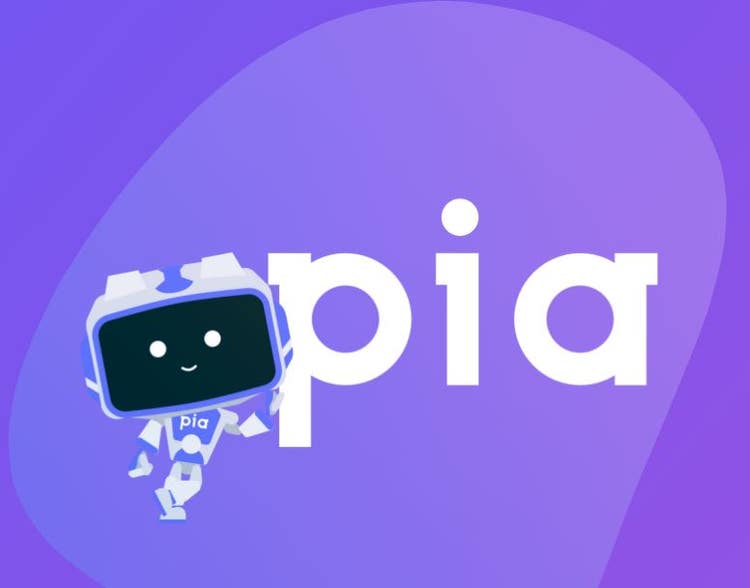Pia Looks To Score In North American MSP RPA Business
‘We really want to change the path of MSPs who have reluctantly let go of being technologists. … We’re here to help get rid of the noise, get rid of the service desk ticket, so MSPs can have strategic conversations with customers and focus on more value-generating activities,’ says Pia CEO Christian Pacheco.

Christian Pacheco
Bringing Automation To MSPs
A few years ago, when Virtual IT Group (VITG), a New South Wales, Australia-based MSP, had trouble finding a technology for automating the service desk operations of smaller companies like it was, decided to develop the technology on its own. The result was Pia, which is short for predictive intelligent agent, which allowed VITG to analyze, route, and action repetitive tasks as a way of easing the workload of its service desk personnel.
But then VITG took Pia to the next level and created a separate company, also known as Pia, around the technology. The goal, according to Christian Pacheco, managing director of VITG, was to bring Pia to the MSP community to help them with issues related to automating their processes.
“We found huge pain points in our business because the software vendors out there were providing us with platforms that weren’t really focusing on the service desk work,” Pacheco told CRN. “And that’s where MSPs have the greatest pain point, in my opinion. Service desk is always one of the top three biggest headaches year-on-year for MSPs.
[Related: From MSP To MSP Tools: Pia Develops AI To Automate Processes]
So VTIG spun the Pia technology out into a separate company, also called Pia, and late last year brought it to North America, Pacheco said.
“We really want to change the path of MSPs who have reluctantly let go of being technologists,” he said. “I think most people that start an MSP want to actually go into their clients’ organization and help them transform their business or use new and cool technologies improve security. And I think that’s at the heart of what an MSP should be doing. But these MSPs are just getting stuck with firefighting services tickets.”
Pacheco said Pia has an opportunity to expand in the competitive robotic process automation space, and remains committed to bringing new technology to MSPs.
Here’s more of Pacheco’s conversation with CRN:

First of all, define Pia.
Well, it’s a complex question, to be honest with you. But in its simplest form, Pia is ultimately a digital engineer for your service desk. If I wanted to break it down into its most simplest form, that’s what Pia is. So in terms of the platform, Pia is an RPA (robotic process automation) and orchestration platform for your service desk. And it gives MSPs or enterprise service desks the ability to actually perform tasks, or multiple tasks, with an engineer using Pia. So Pia’s actually logging into clients environment, it’s responding to tickets, it’s logging into customers’ environments, and it’s actually doing the work for the engineers. So if there’s a new user creation request, or password reset, it actually logs into Office 365 or on-prem and creates the new user or resets the password. It has about 60 automations it does out of the box. And then on the integration side, it’s actually integrates with most PSAs. Quite a number of firewall and VPN tools as well. So yeah, that’s what Pia is, and that’s what he does.
So you’re entering a space, which appears to have a quite a bit of competition. Who do you see as your is your primary competitors in this?
We’ve got a little bit of competition because we’re directly focused, 99 percent of our efforts, on the MSP space rather than the enterprise service desk. We don’t have an abundance of competition that’s at our level of automation yet, but there’s some coming around the corner. So I think the one that sort of resonates with what we’re doing is probably Rewst. But I think in terms of where we’re at with our platform, and the amount of money that we spent on it over the last few years, I think we’re at least 18 months ahead of them from a technology standpoint.
Pia was actually founded when?
It was founded in 2018. We actually started developing the platform in late 2017. We’ve implemented in into our MSP. So you know, Pia is built out of an MSP. So I have this MSP called VITG, Virtual IT Group, in Sydney, Australia. We’re a $90-million revenue MSP, a quite decent size. And we found huge pain points in our business because the software vendors out there were providing us with platforms that weren’t really focusing on the service desk work. And that’s where MSPs have the greatest pain point, in my opinion. Service desk is always one of the top three biggest headaches year-on-year for MSPs. Regardless of you being able to clear some of the other issues, service desk always stays in the top-three issues for MSPs.
So we built this platform to address that service desk issue. We implemented it in VITG in 2018, and we’ve seen some huge results. We’ve seen a massive uptick in customer satisfaction. We’ve seen huge numbers in terms of ticket times being slashed. A ticket that historically takes an engineer 30 minutes to do has now been done in three or four minutes. We’ve seen that then led to boosting profitability. We don’t have to add headcount every time we brought a new customer in. So we were able to keep our existing staff and grow without adding headcount, which boosted profitability. And once we had the platform, we had it working in VITG, we didn’t name it Pia back then. We had some other interesting name, we call it OMLIT, which originally stood for orchestrated machine learning intelligence tool. We went to market with it last July after thinking about it six months before. Then the marketing department said we can’t go to market with a product [whose name sounded like ‘omelet’]. So we actually went for a technology patent using the name ‘predictive intelligence agent.’ And that’s where we got here. We got Pia from that acronym. We’ve signed about 70 MSPs on the platform. So we’ve had quite a bit of success with getting MSPs on it.

You started off in Australia. When did you enter the U.S. market?
We entered the U.S. market in October or November, and we’ve had some really good traction. In the U.S., I think signing an MSP in the U.S. every 36 hours. So managed services companies are actually taking a liking to the platform. They can see the potential of it, and what it means for their future as an MSP. We really want to change the path of MSPs who have reluctantly let go of being technologists. I think most people that start an MSP want to actually go into their clients’ organization and help them transform their business or use new and cool technologies improve security. And I think that’s at the heart of what an MSP should be doing. But these MSPs are just getting stuck with firefighting services tickets. They’re wasting all their time doing all the service desk tickets. And because there’s such a big load of service requests coming in when they get to have the meetings with their customers, the customers aren’t saying, ‘Let’s talk about security and what we can do to enhance it.’ They’re saying, ‘Why haven’t you fixed the service desk tickets? Why am I waiting three days for something to happen, or five hours or whatever it is.’ So instead of a conversation about digital transformation, it’s focused on service tickets, which we don’t want. So we’re here to help get rid of the noise, get rid of the service desk ticket, so MSPs can have strategic conversations with customers and focus on more value-generating activities.

Is Pia a completely separate business from VITG?
That’s right. We completely detached it 12 months ago. So the staff are completely separate. We’ve got a separate office, separate location. It’s completely separate.
Pia for now has a fairly narrow focus on automation. Are there any areas that you could see Pia expanding into later this year or next year?
Absolutely. Late this year or early next year, we think we’re going to be releasing three extra product lines. We’re going to release a Pia NOC (network operating center), a Pia SOC (security operating center), and a Pia firewall. It’s not going to be a NOC or SOC or firewall in the physical sense. It’s going to be the functionality of support in those functions. For example, we might do something like a Cisco firewall. You’ve got a network operating center or a security operating center, which is responsible for managing that. We’re going to say, ‘Hey, let use Pia to directly work with those firewalls and pick up events and pick up when something arises, and instead of actually going to the NOC or SOC or waiting for someone to do something about it, Pia just initiates the playbook. So now, if someone in your SOC is out having a cigarette or lunch or coffee and they get an alert on their phone, and they’re five minutes away from their laptop, sometimes that five minutes is too long. Especially when it comes to security, where a person or people trying to penetrate the network are already in there planting the seed. You know you’re in big trouble.
So what we’re training Pia to do from that sense is to identify, isolate, and resolve past the general point of the firewall capability. So that next level where Pia actually sends the alert, line in the sand, Pia takes over and acts as the digital engineer.

You just mentioned firewalls, SOCs, and NOCs. Does that mean Pia is going to do more with the security going forward?
Oh, yeah, big time. It’s a huge focus for us. So besides actually being accredited ourselves—the platform’s GDPR, ISO 27001, and we’re getting our SOC 1, SOC 2, and HIPAA this month—besides that sort of security accreditation ourselves, we actually want to play each part of a security function for MSPs also.
Given your relatively small size in a fairly big market, is there a chance that Pia could be an acquisition target by a larger company looking to expand their automation?
Anything’s possible, right? There’s some big guys out there that would definitely be looking into the RPA space, the automation space, now. So yeah, I think in terms of its potential, it could potentially be a target.
Does Pia work with the big MSP platform players like the ConnectWise or Kaseya?
It’s got full integration with ConnectWise, Autotask, Kaseya BMS. The next releases will have integration with Halo and ServiceNow.
Anything else we need to know about Pia?
I think in terms of commentary, what the MSPs need to understand is that Pia is not some flash-in-the-pan sort of plug-it-in-and-pray technology. It is a platform, and like all platforms, it requires time and investment to make work in your business. And if you give it time, you put enough effort into using the platform, be dedicated to it like you used to for the PSA and RMM 20 years ago, it’s going to be extremely successful in your business. We’ve got partners that have been on it now for six months. They’re doing 300 or 400 tickets a week with Pia. We’ve got partners that are using Pia for sales tenders. Yeah, they’re putting it in their tenders, saying that ‘our point of difference is Pia.’ So they’re actually using Pia as a sales tool to try and win tenders.